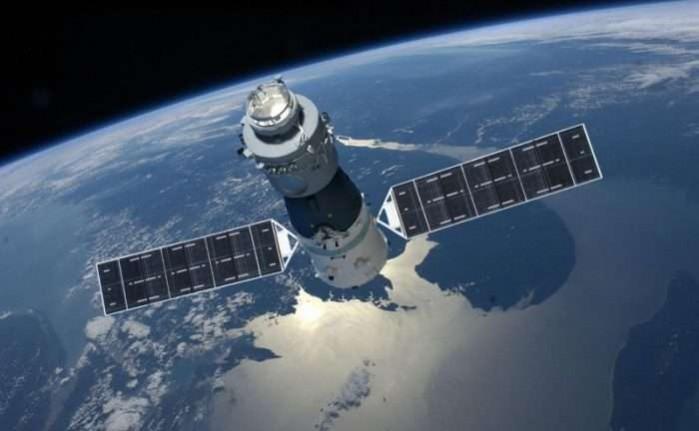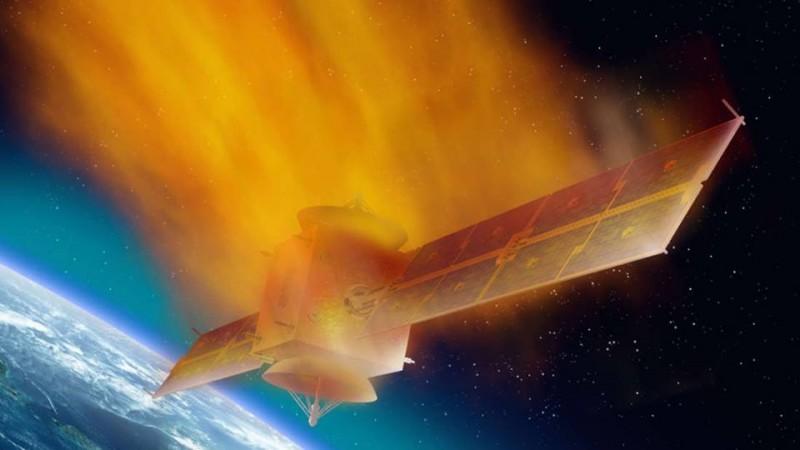
The European Space Agency (ESA) and Aerospace Corporation (US) have predicted that China's first space station, Tiangong-1, will come crashing down on Earth within weeks from now. The months-long speculation finally comes to an end as experts are watching the path of the 8.5-tonne (more than 3,200 kilograms) module as it nears the surface of the Earth.
According to an astrophysicist from Harvard University, Jonathan McDowell, Tiangong-1 is falling by about 6km a week, faster than its recorded speed at 1.5km in October. The constantly changing "weather" in space makes it difficult to predict when the space station would crash-land on Earth.
Key highlights about Tiangong-1
Launch date: September 30, 2011
Launch site: Jiuquan Satellite Launch Center, China
Weight: 8500 kg at launch (18,740 lbs)
Length: 10.5 m (34 ft)
Diameter: 3.4 m (11 ft)
Re-entry to Earth: Early April
No. of manned missions: 2 - Shenzhou 9 and Shenzhou 10
When will Tiangong-1 crash on Earth?
According to a Guardian report, the US-funded Aerospace Corporation has predicted that the Tiangong-1 will re-enter the Earth's atmosphere in the first week of April, but the European Space Agency has a wider timeline for the module to come crashing down anywhere from March 24 to April 19, 2018.
Where will Tiangong-1 crash on Earth?
In 2016, China had admitted that it lost control of Tiangong-1, making it impossible to perform a controlled re-entry. Adding to the fright of the imminent incident, experts say it is impossible to trace the impact location of the wayward module.

According to the report, Tiangong-1 is expected to re-enter the Earth somewhere between 43-degrees north and 43-degrees south latitudes. In layman terms, the chances of the space station's re-entry are higher in the regions of northern China, the Middle East, central Italy, northern Spain and the northern states of the US, New Zealand, Tasmania, parts of South America and southern Africa.
The US-funded organization that advises private and government enterprises on space flight also noted that any debris surviving the crash into Earth's atmosphere would "fall within a region that is a few hundred kilometers in size."
Is there a threat to life from Tiangong-1's crash-landing?
The threat from Tiangong-1's crash-landing goes beyond its unspecified location and an imprecise timeline. Aerospace warned of a highly toxic and corrosive fuel called Hydrazine onboard the space station. There's no way of confirming at this point that the debris from the Tiangong-1 won't leave any casualties, but experts say the probabilities are one in a million.
"They have a PR embarrassment on their hands," said McDowell added. "The actual danger is small, but it is accepted international best practice nowadays that objects that big shouldn't be able to fall out of the sky in this manner."
Over the years, several space stations have crash-landed on Earth, but there haven't been any reports of deaths or injuries from the debris falling back from the space, except for one instance when a woman was hit by a small piece of debris but was uninjured.
![[Representational image] China's Tiangong-1 is expected to re-enter the atmosphere within few weeks time China's Tiangong-1 space station](https://data1.ibtimes.co.in/en/full/675237/chinas-tiangong-1-space-station.jpg?h=450&l=50&t=40)
"The weight was comparable to an empty soda can," Lottie Williams told FoxNews.com in 2011 while describing the incident. "It looked like a piece of fabric except when you tap it, it sounded metallic." Williams was sure she'd found a piece of a shooting star.
But it's also important to keep an eye out for the massive Tiangong-1, as Jonathan McDowell, an astrophysicist from Harvard University, told the Guardian that "Tiangong-1 is big and dense so we need to keep an eye on it. I would guess that a few pieces will survive re-entry. But we will only know where they are going to land after the fact."
China's Heavenly Palace
China's space agency launched Tiangong-1 in 2011 as a demonstration of its position as a global superpower. The country's first space station was referred to as the "Heavenly Palace," which was used for both manned and unmanned missions, and it was described as a "potent political symbol" of China.
Tiangong-1 was also visited by China's first female astronaut Liu Yang in 2012. While the space lab was expected to end its operation in 2013, the Chinese space agency decided to extend its lifespan for a few more years. But during this period, China lost control of the space station.
China is already succeeding the Tiangong-1 with a permanent 20-ton space station that is expected to launch around 2022. But before that, China is currently using Tiangong-2, which was launched in 2016, as a testbed for the bigger project.
Besides Tiangong-1, there have been other crash-landings, such as NASA's 77-tonne Skylab in 1979 and the Soviet Union's 20-tonne Salyut 7 space station in 1991.

















